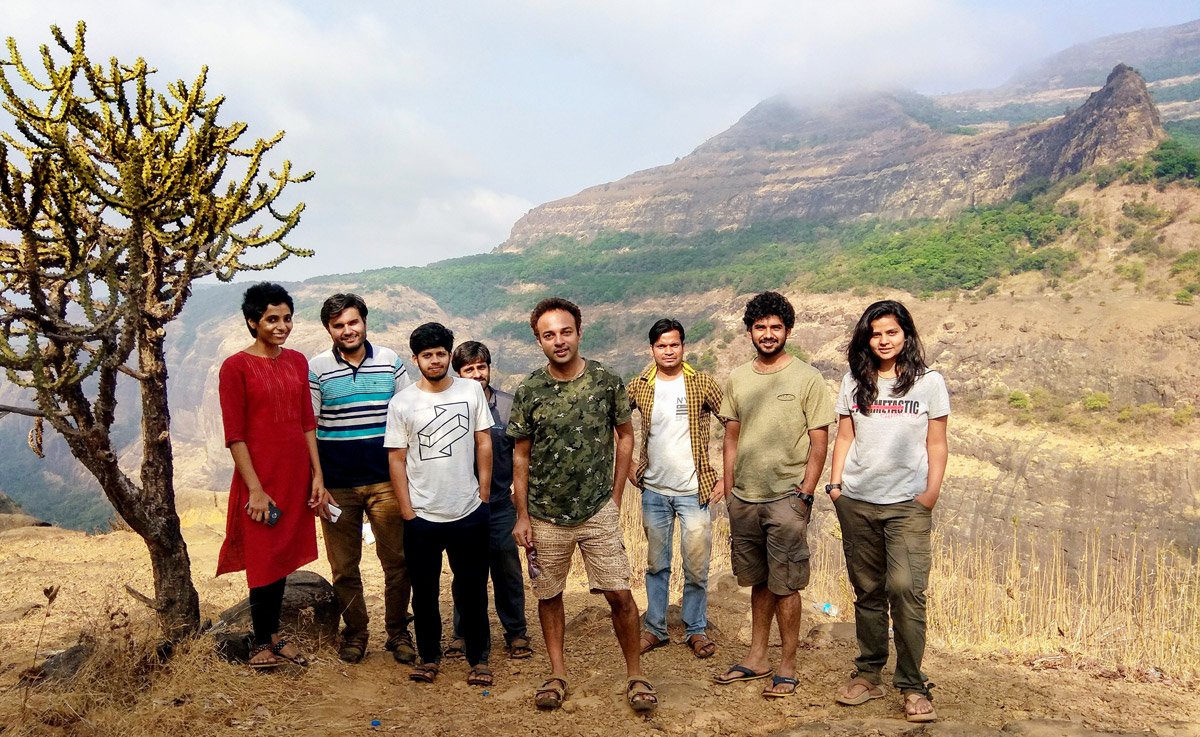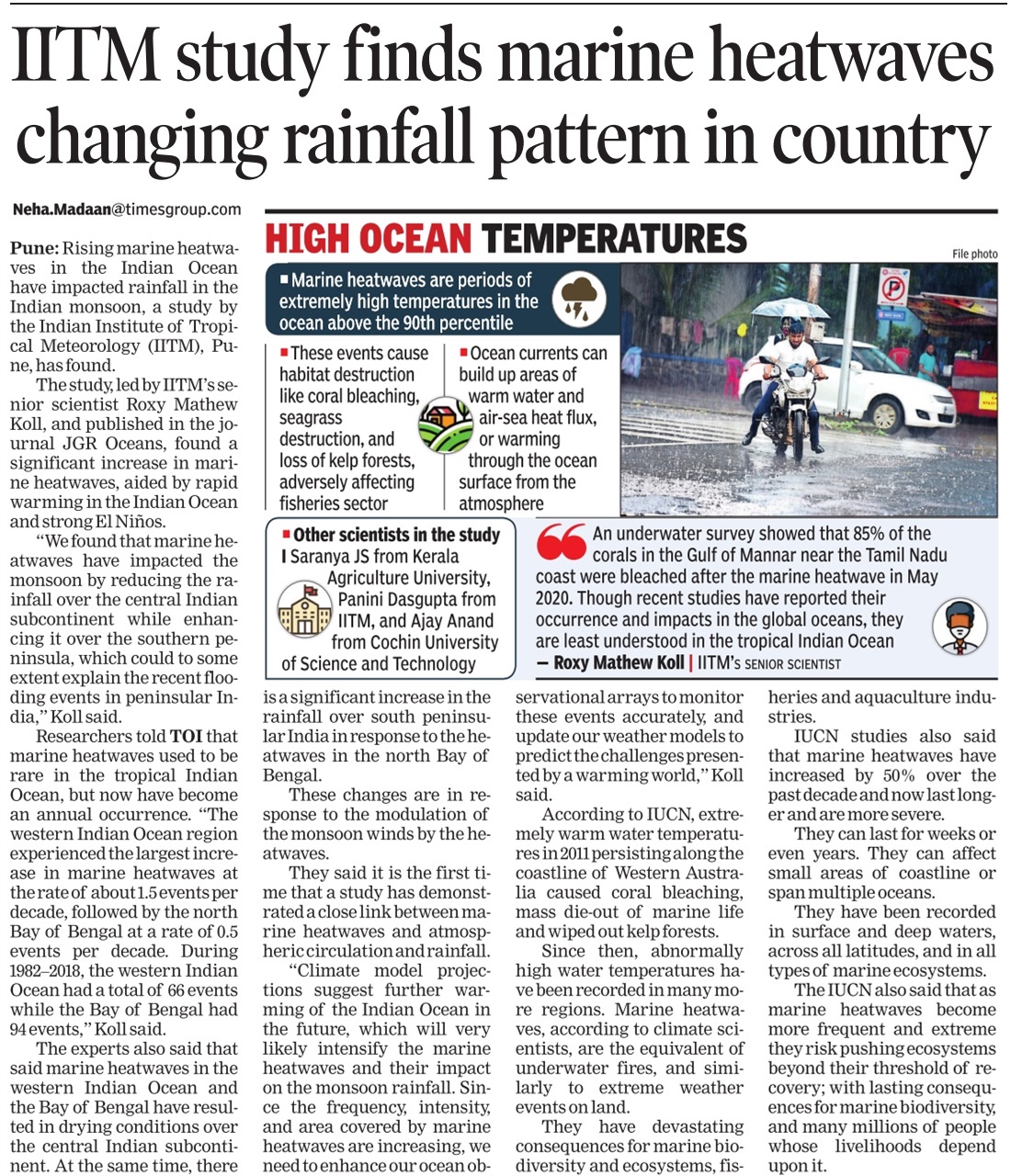Cloudbursts
Cloudbursts—violent and voluminous amounts of rain pouring down in a short duration over a small area—have been reported since the mid-19th century. Yet, the characteristics of these events remain elusive, and our efforts in monitoring and forecasting them is at an embryonic stage. However, their disastrous impacts that cause loss of lives and property are seemingly increasing in a changing climate and have led to close observations in the recent decade, advancing our understanding of these events.
Clouds blanket seventy percent of the Earth’s surface at any given time. They are like a thin layer of the floating ocean, with enough water to cover the entire surface of Earth with about one inch of rain. A modest-sized cloud (1 cubic kilometer) may contain more than 500,000 litres of water—equivalent to the mass of a hundred elephants.
Cloudburst events are often associated with cumulonimbus clouds that cause thunderstorms and occasionally due to monsoon wind surges and other weather phenomena. Cumulonimbus clouds can grow up to 12 to 15 kilometers in height through the entire troposphere (occasionally up to 21 kilometers) and can hold huge amounts of water.
However, cloudbursts are not defined based on cloud characteristics and do not indicate clouds exploding. Cloudbursts are defined by the amount of rainfall. According to the India Meteorological Department (IMD), 100 mm of rain in one hour is called a cloudburst. Usually, cloudbursts occur over a small geographical region of 20 to 30 square kilometers.
1 mm of rain is about 1 litre of rainwater for every square meter. Hence, if a cloudburst is 100 mm per hour, that is 100 litres for every square meter where this occurs. For a small geographical region of 20 square kilometers, that is about 2 billion litres of water in an hour. That is a huge amount of water in a short spell, for a small region.
In India, cloudbursts often occur during the monsoon season, when the southwesterly monsoon winds bring in copious amounts of moisture inland. The moist air that converges over land gets lifted as they encounter the hills. The moist air reaches an altitude and gets saturated, and the water starts condensing out of the air forming clouds. This is how clouds usually form, but such an orographic lifting together with a strong moisture convergence can lead to intense cumulonimbus clouds taking in huge volumes of moisture that are dumped during cloudbursts. Tall cumulonimbus clouds can develop in about half an hour as the moisture updraft happens rapidly, at a pace of 60 to 120 km/hr. This updraft increases with height, and you might have encountered some of these developing clouds on a flight as the attendant announces, “fasten your seat belts, turbulence ahead”. A single-cell cloud may last for an hour and dump all the rain in the last 20 to 30 minutes, while some of these clouds merge to form multi-cell storms and last for several hours.
Cloudbursts, hence, occur mostly over the rugged terrains of the Himalayas, Western Ghats, and northeastern hill states of India. The heavy spells of rain on the fragile steep slopes trigger landslides, debris flows, and flash floods, causing large-scale destruction and loss of people and property. Recent cloudbursts that caused significant devastation occurred over the Himalayan foothills, in Himachal Pradesh (in the year 2003), Ladakh (2010), and Uttarakhand (2013), to name some. Cloudbursts were reported from the northeastern states and Western Ghats states during the current monsoon soon (2022).
On 8 July 2022, flash floods occurred in the Lidder Valley en route to Amarnath Temple in Jammu and Kashmir, taking the lives of several pilgrims. While the media links this event to cloudbursts that occurred upstream of the temple, there is no meteorological record in the surrounding regions to validate this. Weather forecasts indicated scattered light rains for the region, and the IMD recorded moderate rainfall at the temple station.
Monitoring stations on the ground can hardly capture the cloudburst characteristics due to their highly localized and short occurrence. Hence, most of these events go unreported due to the lack of monitoring mechanisms in the region, weakening our ability to understand these events in complete perspective.
Heavy rains and waterlogging brought Bangalore to a standstill during the first week of September 2022. Social media was abuzz, passing off a two-year-old video of cloudbursts in Perth, Australia, as Bangalore cloudbursts. None of the city’s weather stations recorded a cloudburst but indicated heavy rains during the week as the monsoon winds gained strength due to a low-pressure area developing in the Arabian Sea.
Strong monsoon wind surges along the coast can also result in cloudbursts, as in the case of Mumbai (2005) and Chennai (2015). Coastal cities are particularly vulnerable to cloudbursts since the flashfloods make the conventional stormwater and flood management policies in these cities dysfunctional.
While satellites are extensively useful in detecting large-scale monsoon weather systems, the resolution of the precipitation radars of these satellites can be much smaller than the area of individual cloudburst events, and hence they go undetected. Weather forecast models also face a similar challenge in simulating the clouds at a high resolution. The skillful forecasting of rainfall in hilly regions remains challenging due to the uncertainties in the interaction between the moisture convergence and the hilly terrain, the cloud microphysics, and the heating-cooling mechanisms at different atmospheric levels. IMD’s forecasts, and in general, the weather prediction scenario, have advanced such that widespread extreme rains can be predicted 2-3 days in advance. Cyclones can be predicted about one week in advance. However, cloudburst forecasts still remain elusive.
Multiple doppler weather radars can be used to monitor moving cloud droplets and help to provide nowcasts (forecasts for the next 3 hours). This can be a quick measure for providing warnings, but radars are an expensive affair, and installing them across the country may not be practically feasible. A long-term measure would be mapping the cloudburst-prone regions using automatic rain gauges. If cloudburst-prone regions are co-located with landslide-prone regions, these locations can be designated as hazardous. The risk at these locations would be huge, and people should be moved, and construction and mining in nearby regions should be restricted as that can aggravate the landslides and flashflood impacts.
Climate change is projected to increase the frequency and intensity of cloudbursts worldwide. As the air gets warmer, it can hold more moisture—and for a longer time. We call this the Clausius Clapeyron relationship. A 1-degree Celsius rise in temperature may correspond to a 7-10% increase in moisture and rainfall. This increase in rainfall amount does not get spread moderately throughout the season. As the moisture holding capacity of air increases, it results in prolonged dry periods intermittent with short spells of extreme rains. More, deeper cumulonimbus clouds form, and the chances of cloudbursts also increase.
We see that cloudbursts are reported more frequently from across the country. The climate change signal is conspicuous, but we do not have long-term (20 years or more) hourly data to attest it. With IMD enhancing its automatic weather stations, we may have hourly data that can help map cloudburst-prone regions.
The change in monsoon extremes and cloudbursts we see now are in response to the 1-degree Celsius rise in global surface temperatures. As emissions continue to increase and global commitment to reduce emissions proves insufficient, these temperatures are set to hit 1.5°C during 2020-2040 and 2°C during 2040-2060. We will need urgent action and policies to protect lives and property from extreme events that will amplify as the global temperature change doubles.
Originally published in The Hindu [PDF]
Podcast with Suno India on Cloudbursts.




